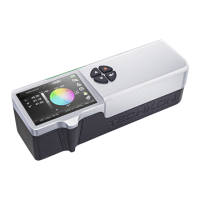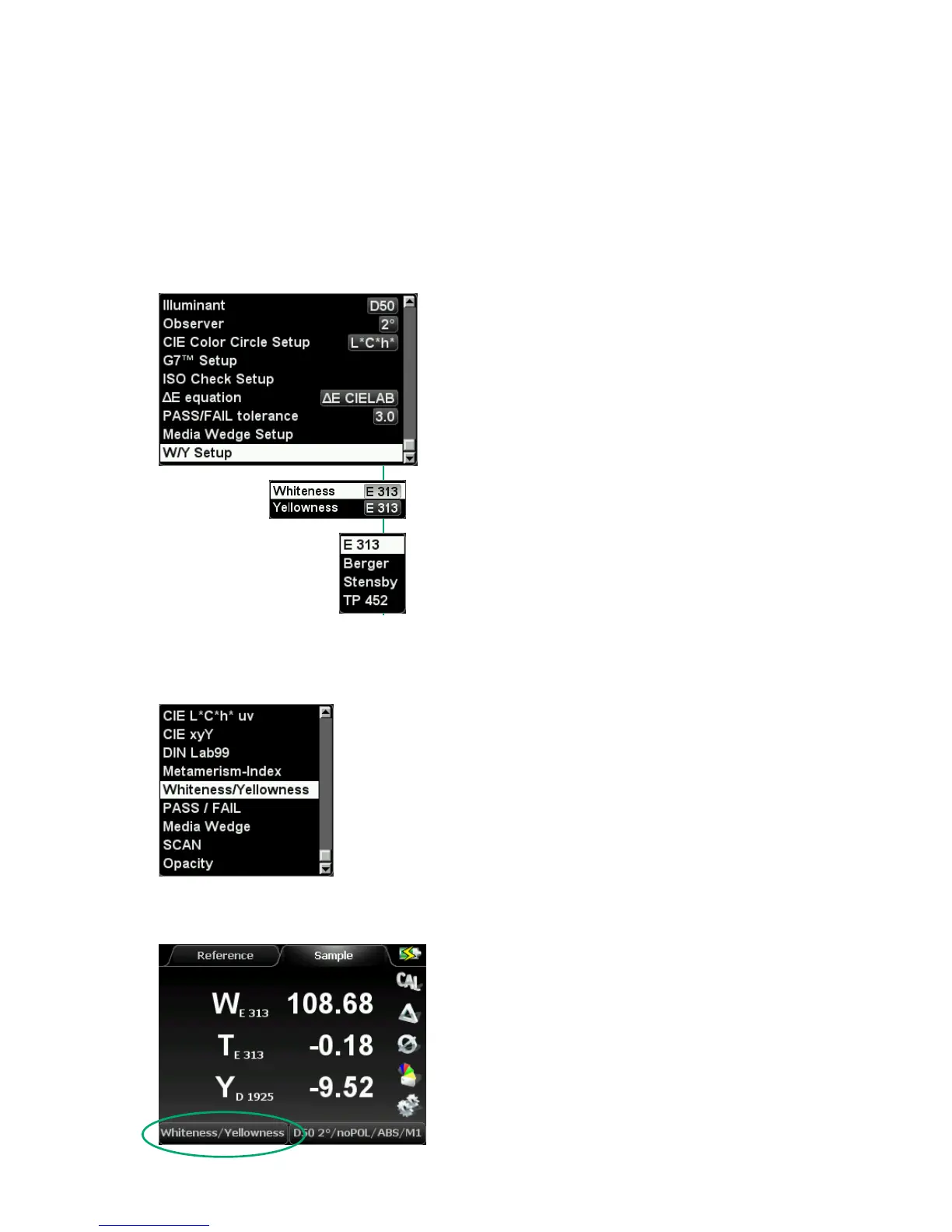Whiteness / Yellowness
Whiteness- and Yellowness-indices are quality parameters important for the paper
industry. SpectroDens Premium will display the whiteness and yellowness indices ac-
cording to the following standards: Whiteness: E 313, Berger, Stensby, TP 425 – Yellow-
ness: E 313, D 1925.
Whiteness index:
Values are usually between 90 and 120 for
“white” paper. The higher the value, the “whit-
er” (= the brighter) the paper. Articial opti-
cal brighteners in the paper will lead to high
values as well.
Yellowness index:
Positive value: the paper has a yellow cast
Negative value: the paper has a blue cast
Whiteness Berger, Stensby
Paper Whiteness is dened by how closely a
surface matches the properties of a perfect
reecting diuser, i.e. an ideal reecting sur-
face that neither absorbs nor transmits light,
but reects it at equal intensities in all direc-
tions. For the purposes of this standard, the
color of such a surface is known as preferred
white. Whiteness is closely related to our vi-
sual perception of the color of paper. Some-
times these variations in whiteness are subtle.
For instance two pieces of paper that fall at
dierent ends of the spectrum on the CIE
whiteness index may appear white by them-
selves however when juxtaposed; their varia-
tions are revealed.
The type of light paper is viewed under can
aect how it looks to the human eye along
with other elements like optical brightening
agents (OBAs) used in paper production. For
example, when OBAs are applied to a dull
sheet of paper it will look brighter in natural
light and dull in articial light. When there are
little to no OBAs applied the paper will look
brighter in articial lighting when compared
to its counterpart with larger amounts of
OBAs.
The Techkon SpectroDens uses the Stensby
and Berger formula’s for quantifying the
whiteness of a print substrate.

